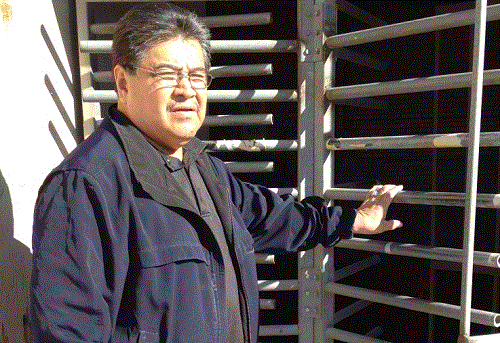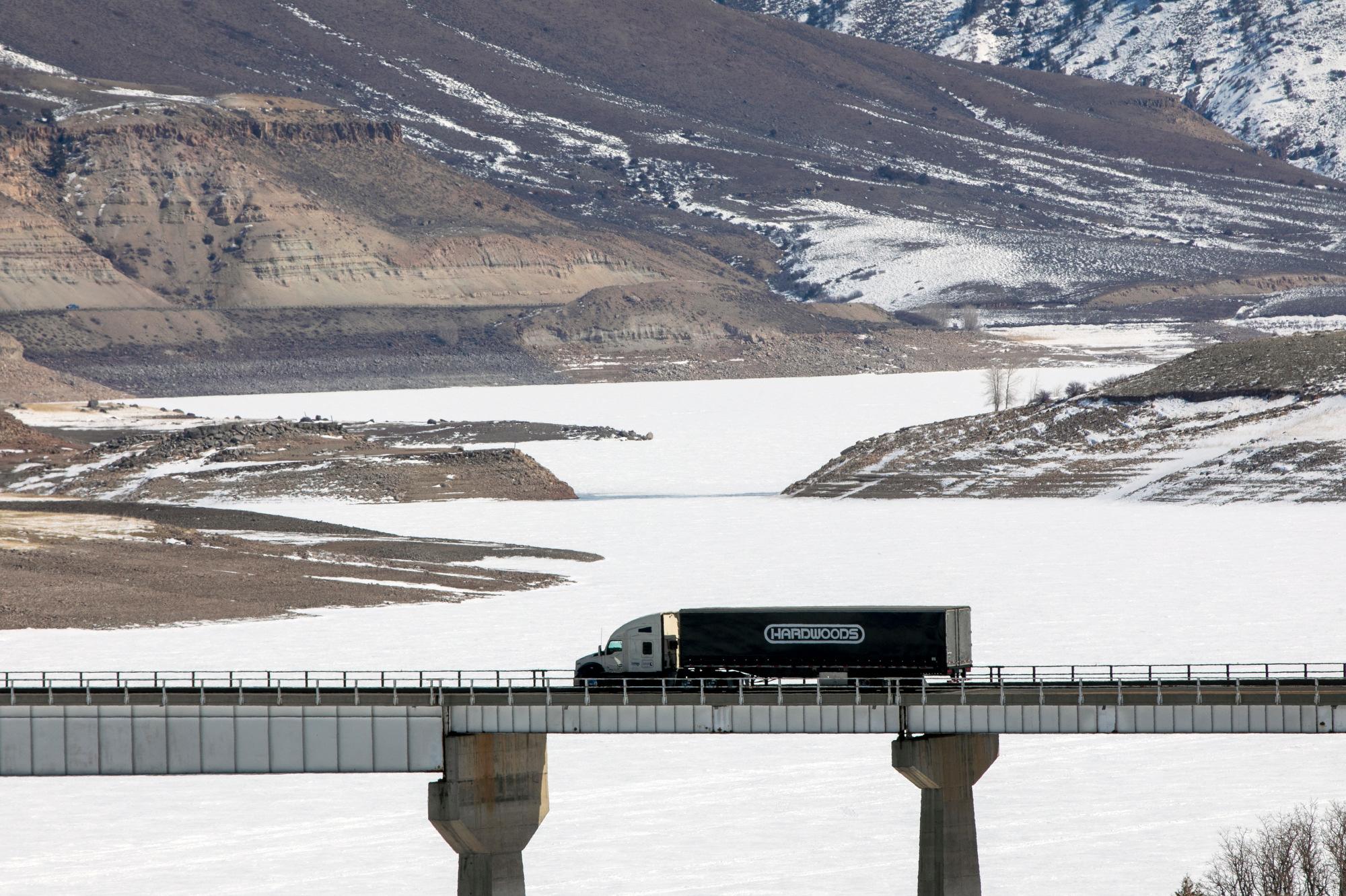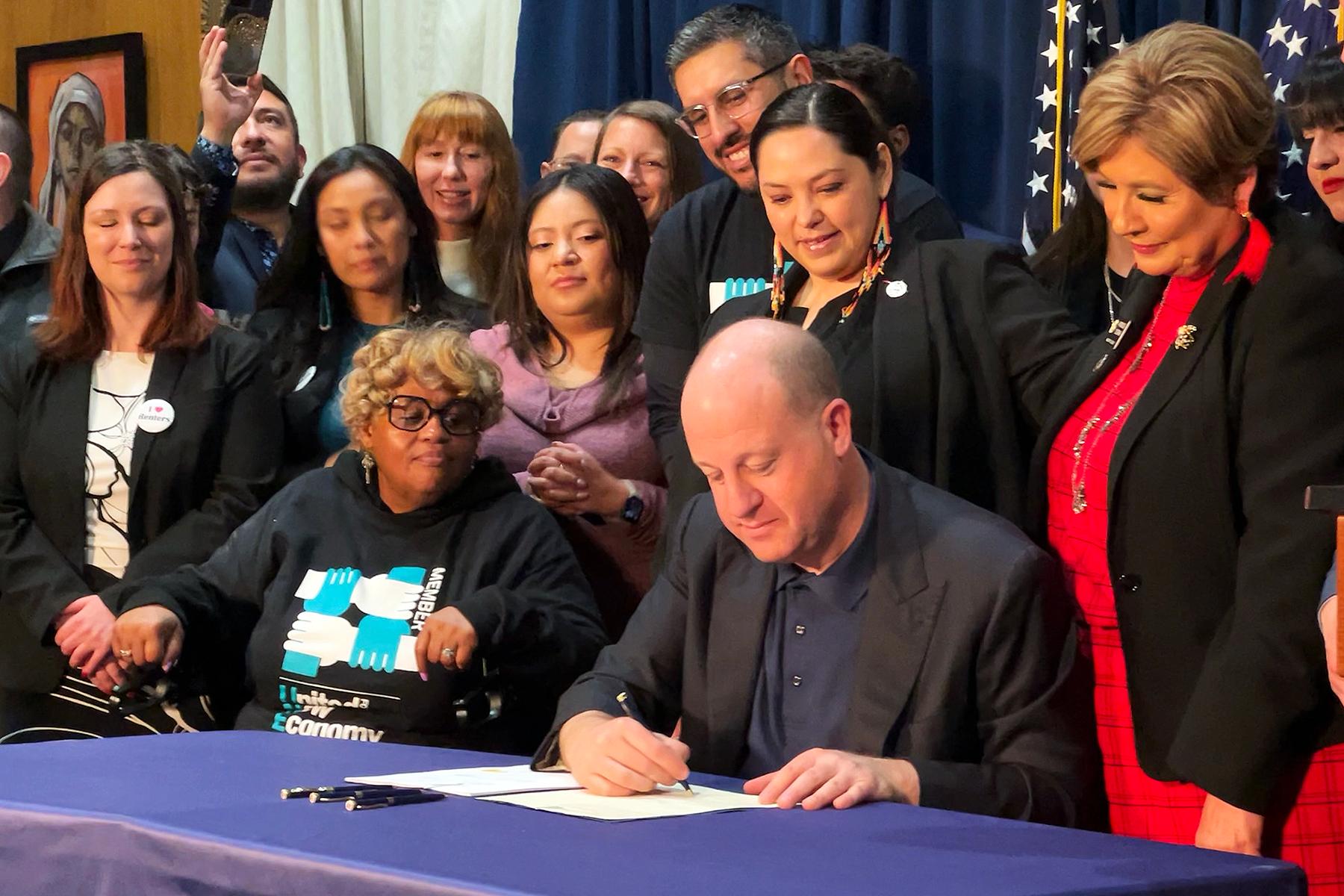
[Photos: Courtesy of John Carillo and I-News]
Listen to other stories in our series "Losing Ground."
Read article from I-News on the income gap.
Join the conversation on "Losing Ground"! Share your life experiences and insight on racial disparities with our newsroom through the Public Insight Network.
For a lot of people, “the American Dream” means that their children will do better than they did. But for some folks, especially blacks and Latinos, that’s not happening. As we’re reporting, in our series “Losing Ground,” those groups started gaining economic ground compared to whites in the 1960’s and 70’s. Since then, those gains have begun to erode. CPR’s Andrea Dukakis has this story about John Carillo, who worked his way up at the steel mill in Pueblo. His daughter hasn't been able to move up the economic ladder the way he did. Then, we explore why the income gap is growing between whites and blacks and whites and Latinos.
Here's a transcript of Andrea Dukakis' report.
Reporter Andrea Dukakis: When John Carillo was a boy, he came across a word he had never heard before in his life. He had no idea what it meant. It wasn’t a fancy word. He’d just never heard it before. The word was: vacation.
John Carillo: You know we used to play softball and we had 3 white kids who played softball and I could remember during the summers, they would say we can’t play next week...we’re going on vacation and I’d say, what’s that.
Reporter: Carillo’s dad was born in Mexico. His mom--in Colorado. Carillo grew up dirt poor--literally--in a small house with dirt for a driveway--and an outhouse instead of a toilet. But things were changing. Pueblo in the 1960’s and 70’s was a place where there were lots of jobs. Jobs that paid well even if you didn’t have a lot of education. Carillo got work at the local steel mill. There were so many workers - they had to park at a distant lot, and walk through this long tunnel under the highway to the plant.
Carillo: You’d always wonder if you’d run into an animal here. Cause a you’d see deer, foxes, at one time they said they’d seen a mountain lion in there. I never did see one.
Reporter: Carillo’s job was to help make train tracks. He and a crew would lift a long track and turn it, so that the ends could be cut to make them smooth and square for welding. And every week he brought home a paycheck. He bought a house--with a paved driveway. And his family went on vacations.
Carillo: We took em to disneyland, We’d go fishing on trips and stuff like that, just different places. We’d just do things that we never did.
Reporter: Eventually the steel industry changed. It was cheaper to make steel in Japan and China. And in Carillo’s unit, there were new machines that didn’t require a crew of men. Thousands of jobs went away. That’s one of the reasons blacks and Latinos are falling behind in Colorado. A lot of them were working jobs like these that disappeared. Carillo isn’t nostalgic. Stepping out of that tunnel at the end of the day, he says, was like getting out of jail. It was back-breaking work. Many times, Carillo had to visit the plant’s infirmary.
Carillo: I spent a lot of time in there. When someone got hurt, that’s the first place they’d bring you. I lost a finger, I had my knees messed up, my arm...a lot of injuries.
Reporter: Carillo ended up retiring early because his injuries. At the end he was making $70,000 a year. And the way things were supposed to go.. his kids would have an easier life, with more opportunities and options. But that’s not exactly the way its working out. This is John Carillo’s daughter. Gina Rosales. She runs a daycare out of her house. Which isn’t big. One little girl is in a high chair having a snack. The rest of the kids--ages 1-4 are down in the basement.
Gina Rosales: I wish it’d be easier than this, but I’m working from 5:30 to 5:30 or 6 on Monday through Friday. It’s a 12, 13-hour day. When my children go home--my daycare children--my day doesn’t end. I’ve got cleaning and mopping and sweeping...
Reporter: And then her own kid comes home who needs attention too. Rosales’ father moved from poverty to the middle class. But Rosales hasn’t really moved forward. Things aren’t necessarily getting worse, but they’re not getting much better. She went college but didn’t finish. She’s got a job, but she’s earning less than her dad did. The data shows this is happening across the country, but especially in Colorado, and especially for minorities. Rosales says running a daycare has worked for her, but if daycare wasn’t an option, she’s not sure what she’d do.
Rosales: I would have to work harder to sustain my lifestyle than my dad did. He was able to get a laboring job. I don’t think he was even out of high school. So I think it’s harder. I think it’s definitely harder. Rosales isn’t complaining. She has a daughter in college in Denver and she’s making a living. But so far, she hasn’t been able to move the needle forward the way her dad did. Andrea Dukakis, Colorado Public Radio News.
Host Ryan Warner: And Andrea joins us in the studio now. Andrea, all week we’ll be talking about this growing gap between whites and blacks and whites and Latinos. Again, we call this series Losing Ground. This gap shows up in college education, it’s also in home ownership. Today we’re going to focus though on the income gap. Tell us about that.
Reporter Andrea Dukakis:So during the Civil Rights Movement in Colorado, Latinos and blacks were earning a little more than 70% of whites. By 2010, that had dropped to about 50% for Latinos and 60% for blacks. And this information comes from I-News, which is based in Colorado, it’s a non-profit investigative news service and they crunch these numbers from census data.
Host:That means in comparison to whites, blacks and Latinos are worse off today than they were during the struggles of the Civil Rights Movement.
Reporter: Yes and in fact this state was one of the most equitable places in the country back during the Civil Rights Movement. Minorities were catching up to whites in income, now the gaps in Colorado are wider than the rest of the country and we’ll talk about that in a bit.
Host:Well the story we just heard from you was about a family and the father, John Carillo, grew up without a lot of money in Pueblo but he got a job at the steel mill and made a really good living. His daughter, Gina, though hasn’t moved up the economic ladder the way he did.
Reporter: Yeah and it’s important to note that just like for whites, blacks and Latinos in general make more now than they did back then. It’s just that there’s this wider disparity between the races now. So as we said in the story, life isn’t necessarily getting worse, but it’s not getting much better either.
Host:Well to illustrate this you went to the steel mill in Pueblo. Why?
Reporter: Well Pueblo and the mill gave Latino workers the chance to move up to the middle class without having to have a college degree, not even a high school degree. And I spoke with Ray Kogovsek from Pueblo, he was a congressman from Colorado in the area in the late ‘70s and early ‘80s and he spoke about the heyday in Pueblo back then. He describes it very nostalgically as a real melting pot with whites, blacks and Latinos working together and making a good living.
Ray Kogovsek:It was just a working man’s town, a steel town, a town where people were able to get together in the evening. Men would stop by Gus’ Tavern after work and have some beers and shots and it was an idyllic situation.
Reporter:So at the height of the plant’s production, it had about 13,000 workers. At its low point in the ‘90s, it had about 1,300 and it continues to operate on a smaller scale now. Some argue that the union negotiated so many benefits that it was too expensive for the company and it couldn’t compete with Japan and other places. But others argued the union was the reason these workers were able to make it to the middle class in the first place. A Russian company owns it now and more of the jobs require education and training than they did before. I spoke with another Ray, his name is Ray Aguilera, and he’s a former Pueblo city council president, about what’s required these days for jobs at the plant.
Ray Aguilera:You have to have some training now. You have to be able to read at an 11th grade level. I watch in the newspaper every day what they’re asking for and they’re asking for people who have specialized training.
Host:And those without specialized training or higher education have been struggling since places like the steel mill shrunk their operations, right?
Reporter:Yeah. Across the nation and in Colorado, the loss of manufacturing jobs really hit minorities hard. Back in 1970 in Colorado, one in four Latinos had manufacturing jobs. Today, it’s one in ten. And I spoke with Alan Berube at the Brookings Institution in Washington, DC for this story and he talked about how critical manufacturing was in the 1960s and ‘70s to helping minorities gain equal ground with whites.
Alan Berube:Manufacturing was always an industry that employed both whites and blacks and even at the time, Latinos, in more equal measure than say the emerging industries of today.
Reporter:And as we said earlier, Colorado was among the most equitable states back during the civil rights movement and now you might say it’s less equitable than the rest of the country. Berube says there’s a reason for this.
Berube:I think in a lot of ways Colorado has undergone an even faster transition in its economic structure than the nation as a whole. The shedding industrial jobs that it had in the 1960s and 1970s at a faster rate than the national average and growing these new kind of economy industries in information technology, communication, financial services.
Reporter:And of course these new jobs require more education, college degrees. And the census data we’re talking about shows not only a growing income gap but also a gap between whites and blacks and whites and Latinos when it comes to college degrees. So it’s all tied closely to education.
Host:Okay, there’s the loss of manufacturing jobs, the lack of education. What else is causing this income gap?
Reporter: We’ve spoken to a lot of people for this series and they point to different factors. Some say it’s the loss of affirmative action policies and other public policies. Some say it’s so many more blacks and Latino households headed by single parents and one income just isn’t the same as two. I also heard from folks that they worry that some of the energy behind the Civil Rights Movement has waned. Here’s LaDon Sullivan [ph], whose grandmother, Ruth Denny, was a civil rights leader in Denver.
LaDawn Sullivan:When the Civil Rights Movement kind of came to a culmination in the late ‘60s, there was kind of like this “We have arrived. We’ve overcome this.” And some folks, especially the older generation’s like you’ve overcome nothing. We’ve only gone like one step. There’s like fifteen more steps to go.
Host:What are the key solutions here? What did you hear from the folks you talked to for this story?
Reporter:Well, there are lots of ideas. People say more kids should be going to college and the state needs to improve on that but Alan Berube again of the Brookings Institution says there’s more to it.
Berube:I think if we want to do something about the issue, it’s not enough to say that everybody should just go get a four year college education or a master’s degree or PhD. There are a lot of jobs, still in America, in manufacturing, but also in other kind of local serving industries. Machining services to keep your plumbing working and your electricity working, these sorts of industries don’t require a four year college degree but they’re going to be in demand for a long time and they tend to pay decent wages to folks who don’t have a four year college degree.
Reporter: Berube says the country needs to think of other pathways besides college. No matter what your raise. Sort of reinvent vocational education for the next generation and he says that’s one way to correct the imbalances in the country. He says by 2050, almost half of the working age population will be non-white. So it’s not only critical to these minority groups, it’s also critical to the country’s economic future.
Host:Andrea, thanks so much.
Reporter:Thanks, Ryan.
Ryan Warner: That’s CPR’s Andrea Dukakis. Her story is part of Losing Ground, a series we’re airing this week.
Listen to other stories in our series "Losing Ground."
Join the conversation on "Losing Ground"! Share your life experiences and insight on racial disparities with our newsroom through the Public Insight Network.









